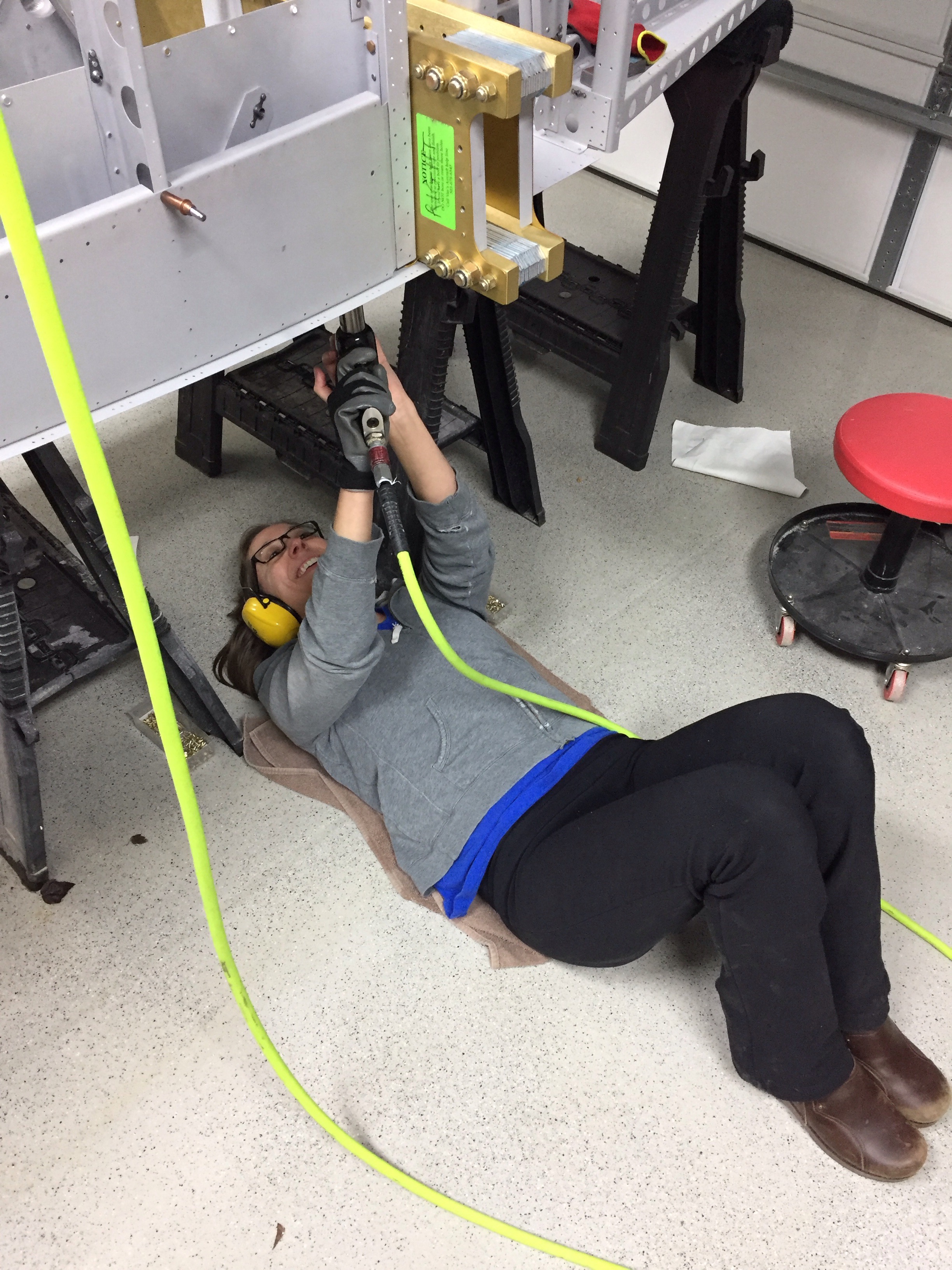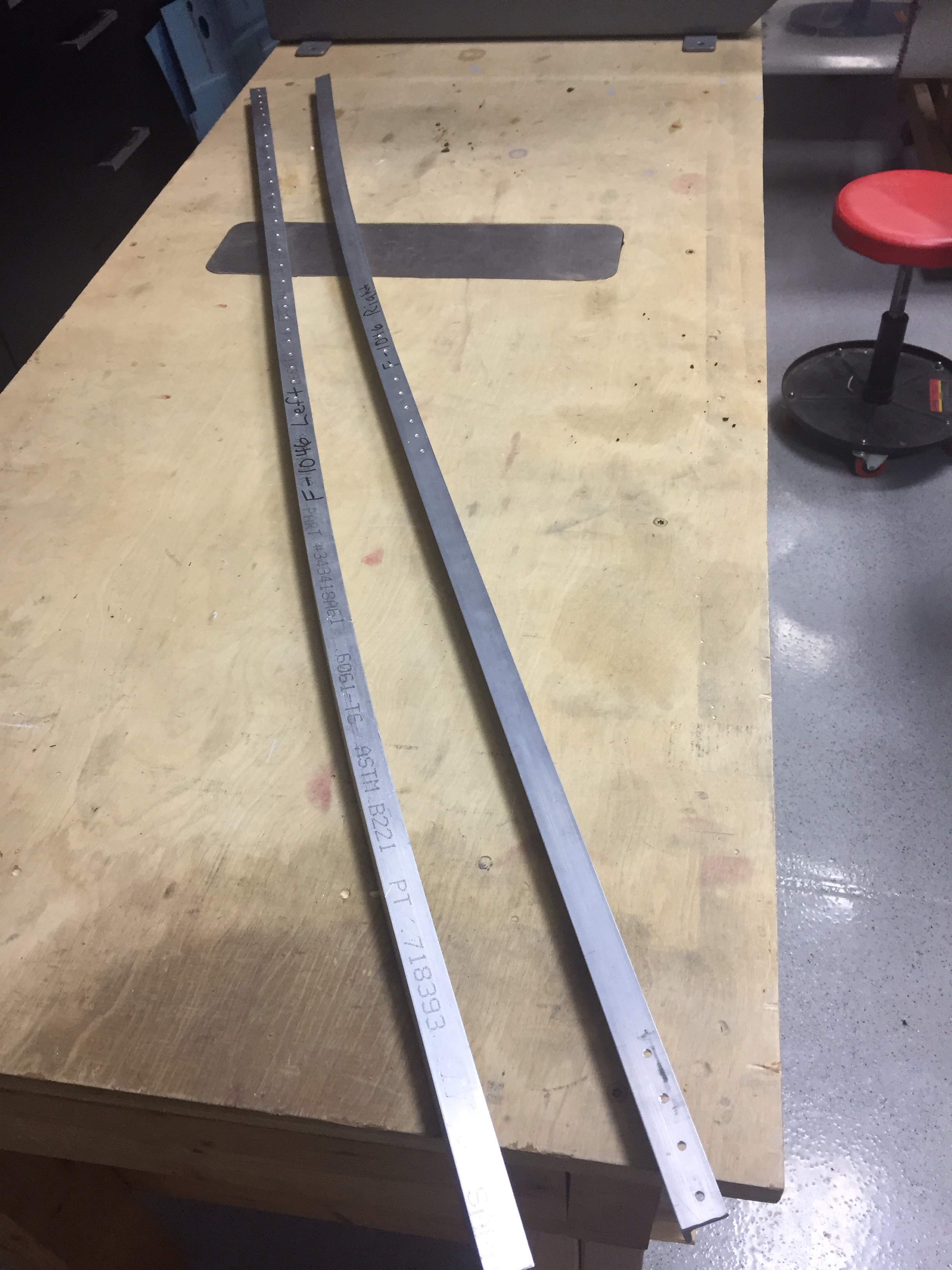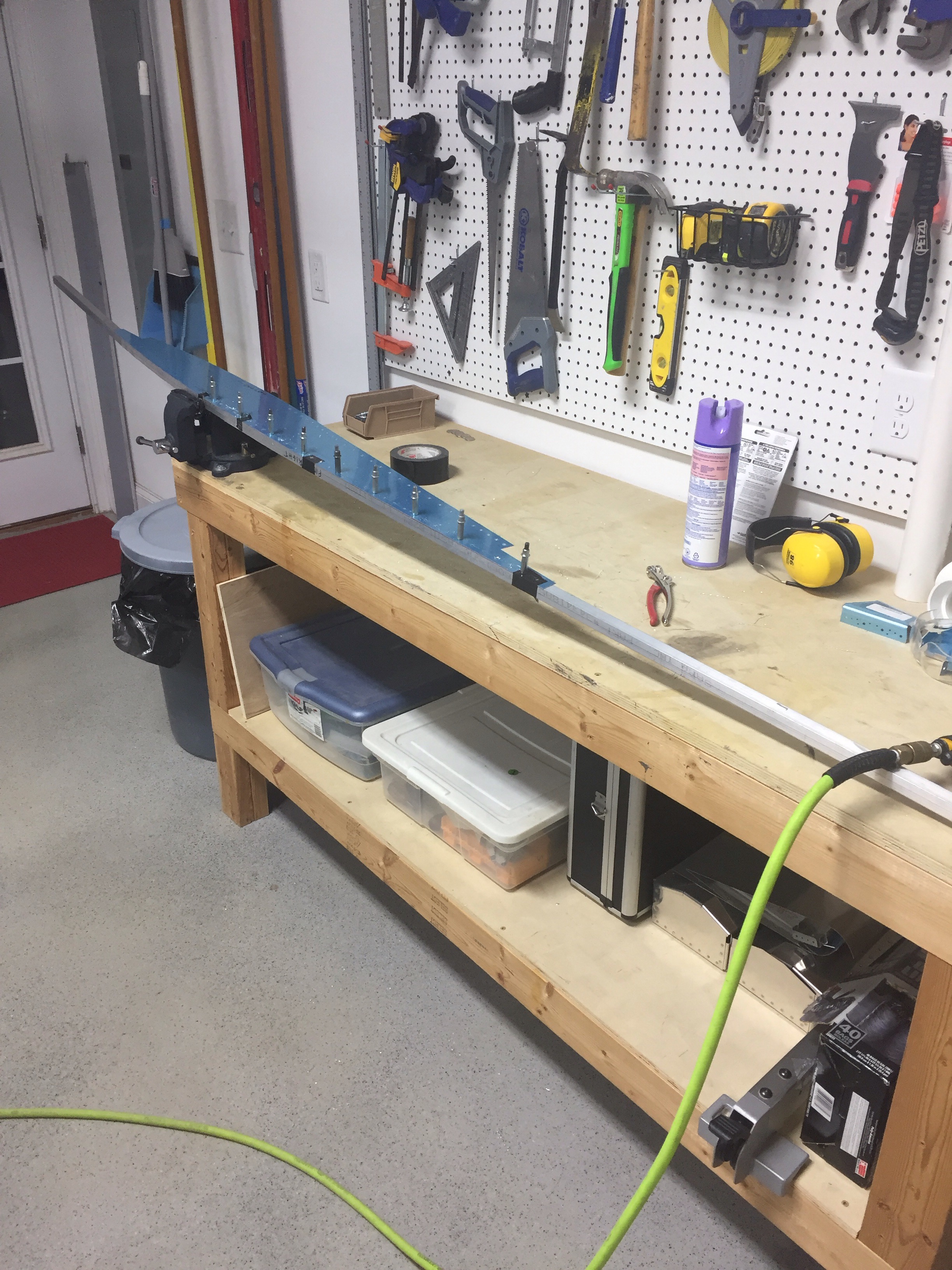It took quite a while to prep all the pieces, but after a lot of boring tedious work, it’s ready to put the two pieces of bread together and bang some rivets. The wife came out in her steel toed shoes for safety and was kind enough to lay on the cold floor while I manned the bucking bar. The work went quickly and we only had to drill out one rivet!

With the bottom of the fuse complete, the sidewalls are next and involve a bit more metal working than anything thus far in the project. The main support pieces on the sides are made up of longerons which are formed from a 3/4″ angle iron that is 1/8″ thick. The plans call for putting it a vise and smacking with a rubber mallet, using a bending jig to ensure the proper curve is met. Another builder used a neat trick of putting a few nickels in the vice and using it as a manual bending machine. I decided to give it a shot and was pretty happy with the result. However, it took forever to get these four pieces done. As soon as you got the lateral curve set, the vertical plane would be wrong. So it was a laborious process of bending and rebending.


I did stall at this point for some time due to home improvement projects, back to back drill weekends, and a few other things going on. But taking a weekend getaway in the DA-40 and running into a fellow 10 builder randomly rejuvenated my building motivation and I finally finished destroying nickels in my vise. Taking a long break isn’t always the best for the project, as I realized that the first longeron I tackled after getting back to the build was done wrong. Fortunately I was able to correct the wrong curve and didn’t mess it up beyond repair. I confused my template labeling and used the wrong side of the template so had an incorrect curve. Next up is to put them in place and start working on more of the structural component for the side skins.
